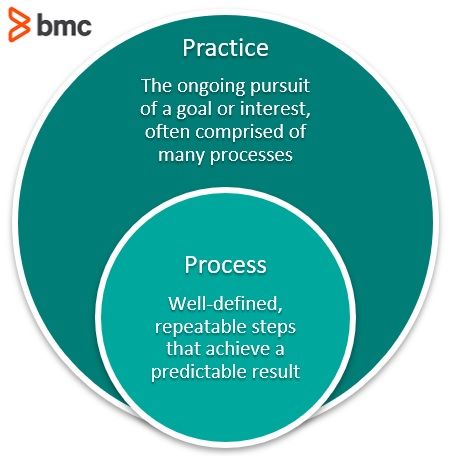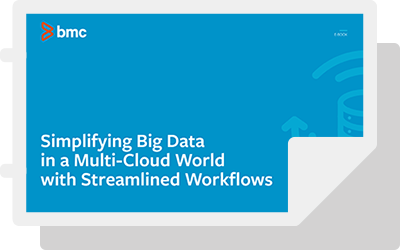Data governance is a broad category that includes internal policies and procedures controlling the management of data. Data governance ensures that data is:
- Secured
- Trustworthy
- Documented
- Managed
- Audited
Put simply, data governance means that enterprises have a high quality of data management through all phases of the data lifecycle. (Learn about the differences between data governance and data management.)
Effective policies and procedures of data management lead to improved business outcomes and drive business growth, and in the current competitive market, it’s a requirement for organizations. Enterprises currently collect a staggering amount of internal and external data. In order to use that data effectively, manage risks, and reduce costs, effective data governance is a must.
Why is data governance important?
Data is arguably the most important asset that organizations have. Data governance helps to ensure that data is usable, accessible and protected. Effective data governance leads to better data analytics, which in turn leads to better decision making and improved operations support. Further, it helps to avoid data inconsistencies or errors in data, which lead to integrity issues, poor decision making, and a variety of organizational problems.
Data governance also plays an essential role in regulatory compliance, ensuring that organizations are consistently compliant with all levels of regulatory requirements. This is key for minimizing risks and reducing operational costs.
At its core, data governance leads to improved data quality, decreased data management costs, and increased access to data for all stakeholders. The result is better decision making and better business outcomes.
A strong data governance strategy
While the benefits of a strong data governance framework are clear, there are some more specific organizational objectives that you’ll want to keep in mind when creating and implementing one that fits your organization. While every organization’s plans will look different, there are some guiding objectives to keep in mind as you develop and implement effective systems of data governance. A few key objectives are:
- Ensuring that data is used properly. This helps to prevent data errors and the misuse of personal or sensitive data. The best way to meet this objective is through clear policies on data usage and effective procedures to monitor and enforce those policies.
- Complying with all regulatory requirements. This is generally a given when it comes to data governance, but something to keep in mind through all phases of development and implementation.
- Improving data security. One of the key objectives of data governance is ensuring that all data is secure and that there is no unauthorized data access.
- Creating and enforcing data distribution policies. While it’s related to data security, this is a point that’s worth emphasizing in and of itself. A good data governance plan must include specifics about how data can be distributed. These policies play an important role in preventing the unauthorized use or access of data and should be a focus of any data governance framework.
Considering these objectives as you create and implement a data governance framework will make the process easier and more effective. And, as you consider these objectives, make sure to consider any additional goals that are unique to your organization or that might be necessary to address specific organizational goals.
What to include in your data governance strategy
As discussed, data governance is a broad category. Consequently, there are a number of things included in a strong data governance framework. As a start, it should include policies, rules, procedures, and structures for data management.
To help ensure that these procedures are focused and working towards the right objectives, it’s a good idea to create some foundational documents to guide the process. These should include:
- A mission statement
- Quantifiable data governance goals
- Metrics by which the goals will be measured
- Clear guidelines detailing who is responsible for various aspects of data governance
Further, throughout every phase of this process, it’s important to document all parts of the framework and share them throughout the organization.
In addition to the above policies and procedures, some enterprises make the decision to utilize data governance software to help with implementation and enforcement. While this isn’t a requirement, many organizations decide to utilize this software to help support:
- Program and workflow management
- Data catalog creation
- Development of policies
- Process documentation
Such software can be an effective way to ensure that plans are effectively developed, implemented, and enforced.
Who is included in data governance?
As you might imagine, building a strong data governance team is a key part of this process and of ensuring that it’s an effective process. While all teams look a little different, some key positions to include on a data governance team are:
- A data manager, who is responsible for leading the design and implementation of policies and systems and for staffing the data governance team. In some organizations, this is the chief data officer, yet many opt to have a dedicated role for the manager of data governance.
- A data governance architect, who is responsible for oversight of designs and implementation.
- A data strategist, who creates and implements strategic plans.
- A compliance specialist, who ensures compliance with all regulatory standards.
In addition to the core governance team, stakeholders for data governance include the board of directors, finance executives, operations, marketing, sales, the CIO, and IT management. Involving all stakeholders in the process is an important part of the process and can lead to better outcomes.
Effectively implementing data governance practices
As you might imagine, the first step for creating a strong data governance practice is working with relevant stakeholders to create standards and policies for data governing. The next step is drafting plans to implement and enforce those procedures. These procedures are as important as your underlying policies, as they plan a key role in ensuring that plans are effectively executed and policies are consistently implemented.

This process can feel overwhelming and can create some conflict throughout organizations, as owners of data assets often have different opinions of what data governance should look like. To help make this process as easy as possible:
- Get all stakeholders and data asset owners involved in the process from the beginning.
- Regularly conduct data governance training and education for all relevant teams, individuals and stakeholders.
- Ensure that there is ongoing communication about the development and implementation of your data governance systems and procedures. This can take the form of emails, newsletter, formal reports, status updates or meetings, but it’s important to have some type of consistent communication with all stakeholders.
- Make sure that you are working with clear, specific, and measurable goals.
- Start small and scale up as you’re ready. It’s tempting to tackle all objectives at once, but it’s more effective to focus on a few small goals and work to build up your systems from there.
With that in mind, remember that data governance is not a project but rather a practice, meaning that it will consistently evolve and develop.
Additional resources
For related reading, explore these resources:







